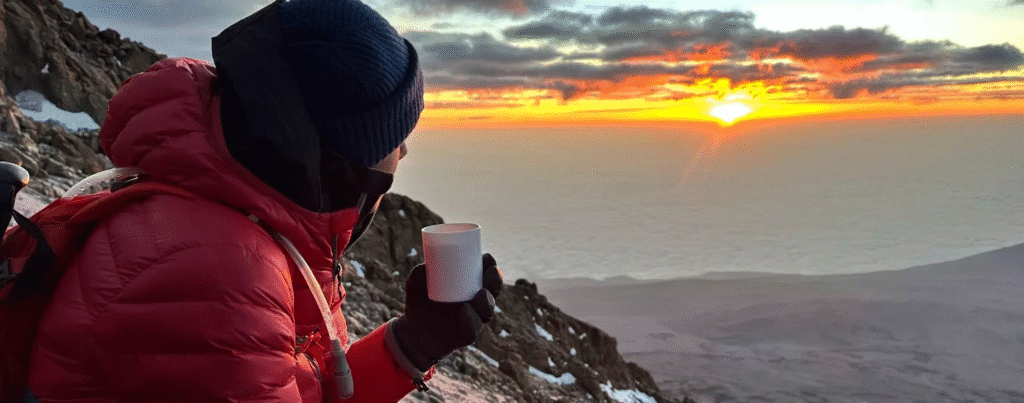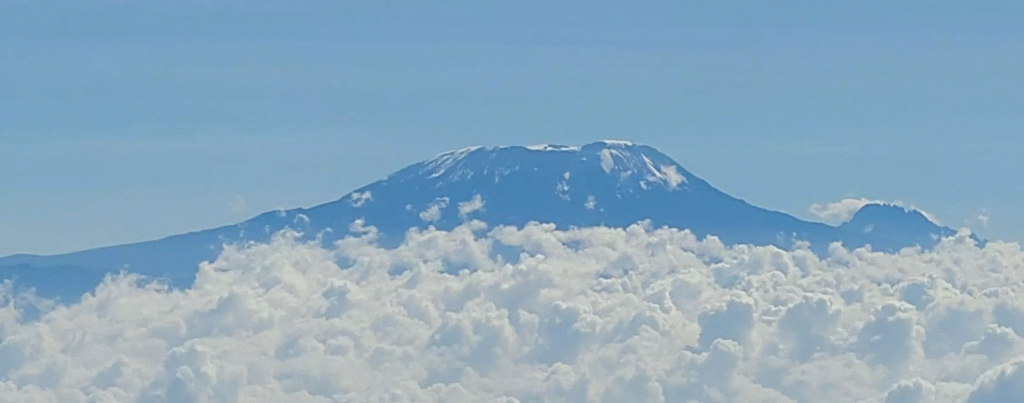In an age when most challenges can be conquered with an app or a shortcut, one stands untouched by convenience: Mount Kilimanjaro. Rising 5,895 metres above the plains of Tanzania, it is the highest point in Africa and one of the most recognisable silhouettes on Earth — a single, snow-topped giant standing against a horizon of golden light.
To climb Kilimanjaro is not a feat reserved for mountaineers. It is a journey that ordinary people — teachers, athletes, doctors, parents — can undertake. But what makes it enduringly powerful is that it demands more than physical fitness. It requires patience, humility, and the discipline to keep moving when each breath feels thin.
Kilimanjaro’s story is as much about the people who climb it as it is about the mountain itself.
The first question every climber asks is how long does it take to climb Kilimanjaro? The answer — between five and nine days — hides a deeper truth. Those who rush, rarely succeed.
Altitude is the invisible adversary here. As climbers move higher, oxygen levels drop sharply, and the body must adapt. The best itineraries take seven to nine days, allowing gradual acclimatisation. It’s a reminder that endurance isn’t about speed, but rhythm — the quiet courage of pacing oneself.
The climb becomes a meditation on patience: moving forward when progress feels slow, resting when necessary, listening to one’s body. Many climbers describe this balance as life-changing — a physical metaphor for persistence.
Kilimanjaro can be climbed by several routes, but not all offer the same experience. The most popular — Machame, Lemosho, Umbwe — are scenic but often crowded, and some include inefficient sections, such as the 401-metre ascent that is immediately lost into Karanga Valley.
Team Kilimanjaro’s TK Lemosho Route refines the experience. Designed to improve acclimatisation and reduce congestion, it winds across the mountain’s western flank through rainforest, moorland, and alpine desert. It’s less a march and more a progression — deliberate, scenic, and quiet.
For those who want to go further, the Excel Extension adds a night inside the crater at 5,729 metres after summiting. It’s a hauntingly beautiful experience: sleeping on the roof of Africa, surrounded by ice and silence, in the shadow of an ancient volcano.
The best time to climb Kilimanjaro is during the dry seasons — January to March, and June to October. These months bring stability, clear skies, and stunning visibility across the savannah.
However, the rainy seasons — April to May and November — offer a different kind of reward. The crowds disappear, the air smells of wet earth, and the forests come alive with mist and sound. It is harder, yes, but for many, that difficulty deepens the experience. Every drop of rain feels like proof of commitment.
The ascent through Kilimanjaro’s ecological zones mirrors human resilience itself. The dense rainforest at the base hums with life and energy — the optimism of beginnings. The moorlands test endurance with long, steady climbs. Higher still, the alpine desert strips away distraction until only effort remains.
Summit night — the final push — begins around midnight. Climbers rise in the cold, layering themselves against the wind, headlamps flickering in the dark. Every step requires focus. The temperature drops below freezing. Breath becomes an act of will.

Then, just as exhaustion reaches its peak, the horizon ignites. Dawn reveals glaciers glowing pink and white, and the jagged rim of Uhuru Peak comes into view. The wooden sign appears — humble, weathered, and utterly triumphant. It’s here, at 5,895 metres, that many climbers weep.
It’s not the height that moves them, but the realisation of what it took to get there: persistence through doubt, patience through pain, and the solidarity of people walking the same hard road together.
Climbing Kilimanjaro is not done alone. Tanzanian law requires all climbers to travel with licensed guides and porters — a safeguard born of respect and safety. Team Kilimanjaro, one of the most trusted operators on the mountain, runs seven distinct “support series” designed to match each climber’s temperament.
Around 70 percent choose the Advantage Series, which combines comfort with authenticity — private toilets, three-course meals, and attentive care that preserves energy for the climb itself. Others prefer the Superlite Series, carrying their own packs, relying on minimal support. At the opposite extreme, the Hemingway Series brings refined luxury to the wild — a once-in-a-lifetime VIP experience at altitude.
No matter the level of comfort, what unites all climbers is interdependence. Success depends on teamwork — on trust in the guides, respect for the porters, and shared strength among strangers who become companions.
The descent feels faster, easier — but it’s often the most reflective part of the journey. As the air thickens and the forest returns, climbers find themselves thinking differently. Kilimanjaro has a way of resetting perspective.
Many extend the adventure with a safari across the Serengeti or a few days on Zanzibar’s white beaches, letting the body rest while the mind processes what it’s achieved. But even those who return directly home describe a subtle transformation — a quiet shift in how they approach difficulty, time, and gratitude.

In a world of artificial achievements, Kilimanjaro remains disarmingly genuine. It cannot be bought, hurried, or outsmarted. It respects only discipline and humility. It reminds people that endurance is not a heroic burst of strength but a series of small, steady choices to keep going.
To Kilimanjaro veterans, the summit is not the end. It’s a beginning — a renewed belief in what is possible, a deeper understanding of one’s limits, and a rare peace that comes only after effort.
In that sense, the mountain is not just Africa’s highest point; it’s a mirror of human aspiration. The world changes constantly, but Kilimanjaro stands unmoved — waiting for those who wish to climb, to test themselves, and to remember what real endurance feels like.
Keep an eye for more latest news & updates on Newsross!
